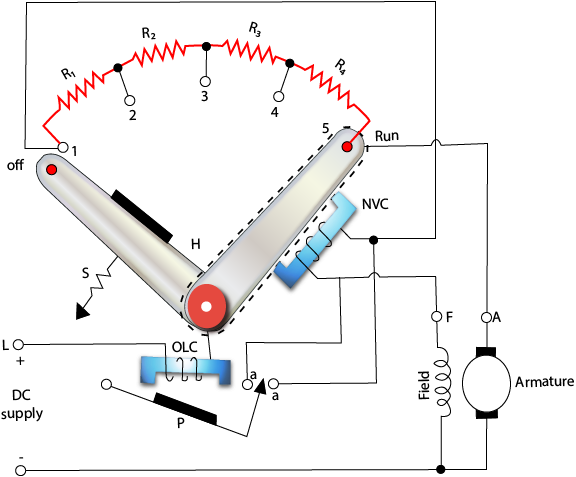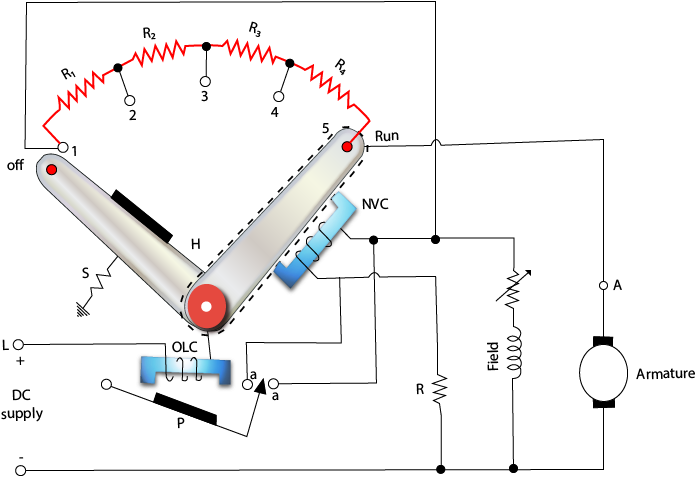Starting of D.C. MotorsA starter is a device that initiates and accelerates the motor. A controller is a device to start, control speed, reverse, stop and protect the motor. The motor's armature current is given by 
Thus, the armature current Ia depends upon E and Ra if V is kept constant. When we switch on the motor, the armature is stationary so back e.m.f will be zero. The starting armature current Ias is given by 
Three-point starter:When we have to start the dc connected motor, the lever turns gradually to the right. When the lever touches the point 1, the field winding gets directly connected across the supply. 
Figure: Three-Point D.C. Shunt motor starter Working:Simple high resistance in steps which comes in series with the armature f machine and control the current. The figure shows the three-phase shunt motor for starting the motor, the handle H is moved manually, and when it moves to contact with the resistance, stud 1 is in the start position. In this position, the field winding receives the full supply voltage, and the armature current is reduced by graduated resistance R1, R2, R3, and R4. Starter handle is gradually moved from stand to stand until it leaves the RUN position. In Run position, motor attains full speed, resistance is completely cut off, and supply is directly connected across both the windings. NVC (No voltage trip coil) is connected in series with field winding of the motor. When the supply voltage falls below a particular value, NVC is, and the handle is pulled back to off position. It also protects against the open circuit of the field winding. The NVC is called no-volt or under voltage protection of the motor. When armature current exceeds the normal rated value, P is attracted by the electromagnet of OLC (overload coil) and close the contact aa, which short-circuits the NVC. This results in the release of handle H, which return to off position and motor supply is cut off. To increase the speed of the motor, field resistance should be increased which reduce the current in the shunt field. A very low field current could not hold the switch and handle will achieve the off position. To overcome this difficulty, 4 point starter is used. 4 point starter:The main difference between the 3 point starter and 4 point starter is that in 4 point starter the field coil is not connected in series with the no voltage coil that means the holding coil is removed from the shunt field circuit and is connected directly across the line with a current limiting resistance R in series. 
Figure: Four - Point D.C. Shunt motorstarter In this arrangement three parallel circuits are formed:
With this arrangement, a change in field current for variation of the speed of the motor does not affect the current through the holding coil because the two circuits are independent of each other.
Next TopicTypes of D.C Machine
|
 For Videos Join Our Youtube Channel: Join Now
For Videos Join Our Youtube Channel: Join Now
Feedback
- Send your Feedback to [email protected]
Help Others, Please Share









